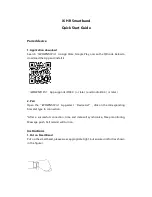
15
ADDING ANIMALS
Set salinity. Adjust water temperature (55°F for systems break-in;
45°F following break-in). Before introducing new lobsters into the
system, dip each lobster and rinse it thoroughly in a bucket of
saltwater. Dipping removes accumulated shipping debris and
prevents lobsters from fouling tank.
Never use freshwater for lobster dips…it will kill them.
For best results,rinse water should be taken from the established display
tank,discarded after use and replenished (pg.13).
Lobsters
In Case of Ammonia Overload...
change 100% of water only.
DO NOT change pads or carbon.
DO NOT wash gravel. DO NOT turn system off.
Your living biological filter is not capable of handling large loads in the beginning.
It requires a 6 week “break-in” period for the bacteria to develop and cover the available
surface area in the filter bed.
This process cannot be rushed.
We recommend very
light loads for the first few weeks.Exceeding initial recommended capacity can lead to
ammonia overload within 7-14 days.
RECOMMENDED LOADING SCHEDULE
Week 1: no more than 25% capacity
Week 4: no more than 50% capacity
Week 2: no more than 25% capacity
Week 5: no more than 75% capacity
Week 3: no more than 30% capacity
Week 6: 100% capacity
Because fin fish are susceptible to temperature shock, it is important to avoid placing
new fish in water much colder than that in which they were shipped.
One day prior to the arrival of new fish, water in the display tank should be set to the
expected temperature of the water in the delivery vehicle. After fish are added, reset
the thermostat and bring water temperature down to proper setting of 50°F.
NOTE: Due to water conditions in some areas, it may be necessary to perform
weekly water changes for freshwater tanks.
Fin Fish
Recommended temperature setting is for American Lobster (Homarus Americanus) and
trout.When using tanks for other species of lobster or fin fish (bass, catfish, etc.) adjust
temperature as necessary for that particular species.














































